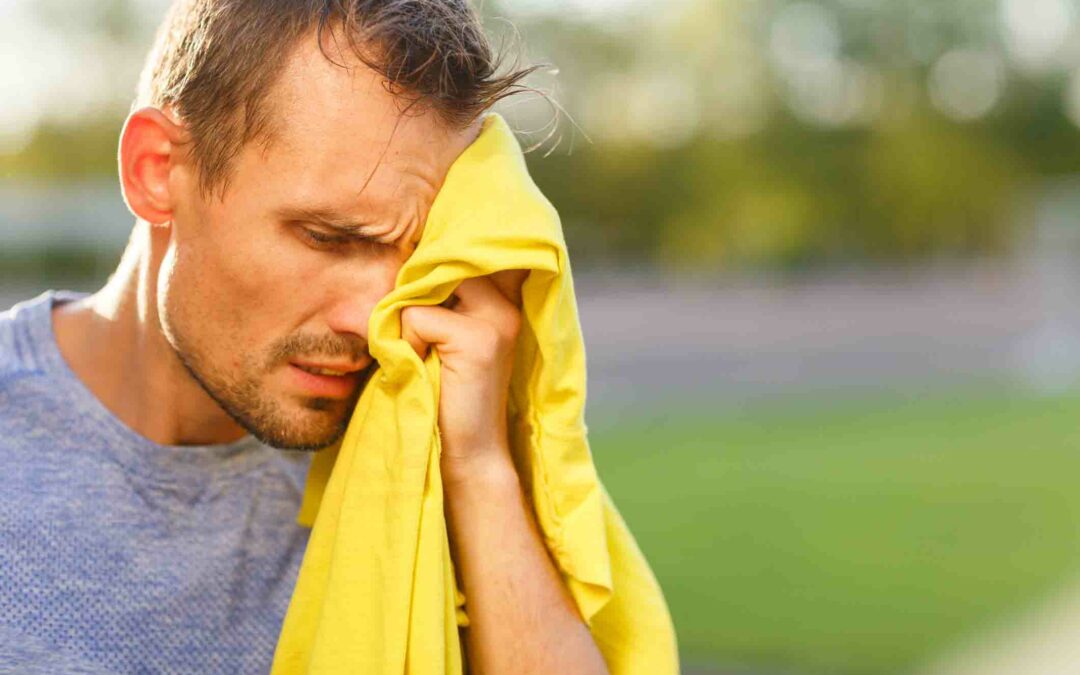With summer now in full swing, there’s one thing we can count on. At some point, it’s going to be hot. While this makes for great outdoor experiences, it can also mean potential health hazards, especially for the young and elderly.
Our bodies contain a lot of moisture. Almost two-thirds of our body weight is water. We lose some of this water when temperatures rise. This becomes perspiration – our metabolism is working to keep us cool to maintain a healthy body temperature. Children and the elderly perspire less and don’t have that same heat regulation. Chronically ill patients taking medication can also have difficulty dissipating heat. All of these folks can certainly get into trouble very quickly if they don’t (or can’t) recognize the signs they’re getting trouble. Alcohol use can also blur those warning signals and energy drinks can actually be counterproductive, by increasing your metabolism and heart rate, which also increases body heat.
Heat cramps may be among the most common heat-related emergencies and they’re typically the first sign your body is having problems with the heat. Heat cramps are painful muscle spasms which can be severe. These spasms, felt mostly in the legs and abdomen often serve as a warning signal for a more severe heat-related problem. Rest and fluids usually provide the means to recover. I’m okay with electrolyte drinks as long as they are alternated with water. You can help make the person comfortable by helping them stretch the muscle and gently massage the area. Salt tablets or saltwater are not a recommended treatment and could actually make things worse.
Know the symptoms of heat exhaustion and heat stroke.
Heat exhaustion: This condition occurs often with people who are required to wear heavy clothing in hot and humid conditions, or exercise in extreme conditions. Signs include:
- Headaches
- Heavy sweating
- Cold, moist skin, chills
- Dizziness or fainting (syncope)
- A weak and rapid pulse
- Muscle cramps
- Fast, shallow breathing
- Nausea, vomiting or both
If you notice any of these symptoms, stop whatever you’re doing immediately, seek a cool space, get rid of the clothing and start rehydrating. Apply cool compresses, take advantage of a cool water shower, pool, garden hose or whatever means to which you have access. You may require medical attention. Heat exhaustion may require rest for up to a week or more for complete recovery.
I cannot understate the importance of water consumption. We lose about a half-gallon of body fluid during the day. That’s about two percent of your body weight. If you workout, you lose even more. With a three percent fluid loss, you begin having difficulty maintaining your body temperature. With a four percent fluid loss-your muscles stop working properly. If you reach 5 percent fluid loss, it’s life threatening.
Heat stroke: Heat stroke is the least common heat illness but it is, by far, the most dangerous. It occurs most often when people ignore the warning signals of heat cramps and heat exhaustion. Heat stroke is the most serious heat-related medical emergency because your body’s vital systems begin to stop functioning. Signs include:
- Warm, dry skin with no sweating
- Strong and rapid pulse
- Confusion and/or unconsciousness
- High fever
- Throbbing headaches
- Nausea, vomiting or both
But lest you think only the very young, very old or infirmed need to take precautions in the heat, please keep in mind that of the 11 Missourians who died from heat-related illnesses in 2014, eight of those were between the ages of 25-64. Be prepared to act when it gets too hot out there. Have a blessed summer!
The Emergency Department at St. Mary’s Medical Center and can be reached 816-655-5450.


